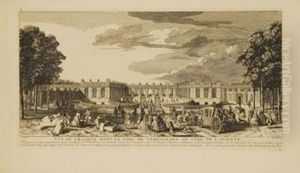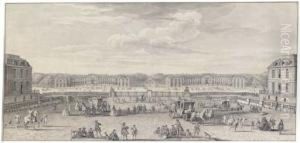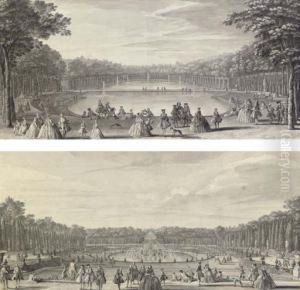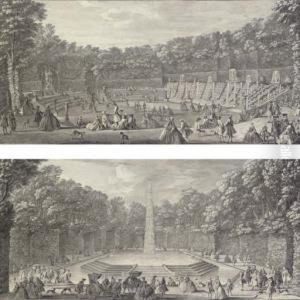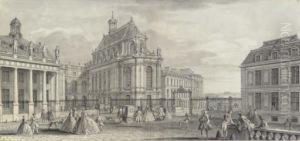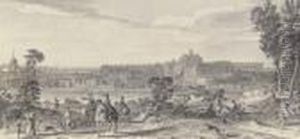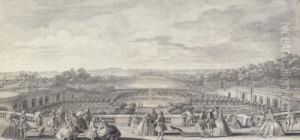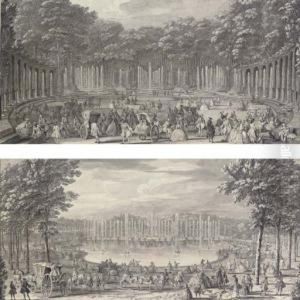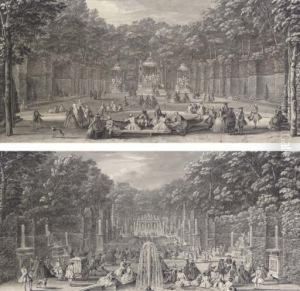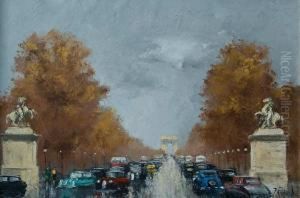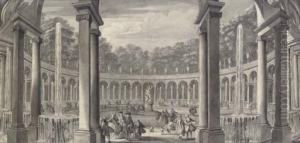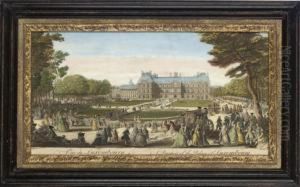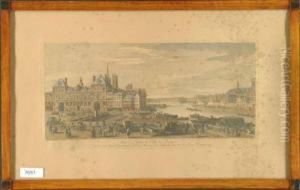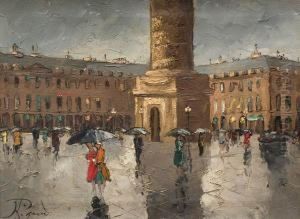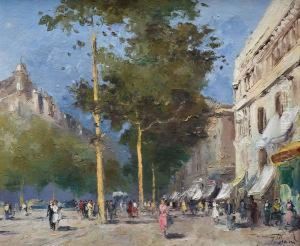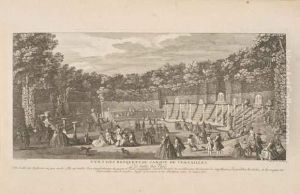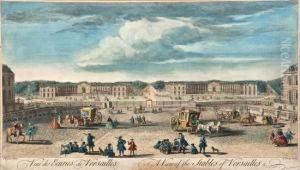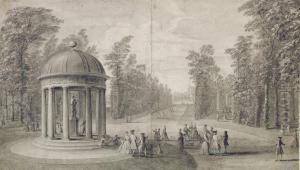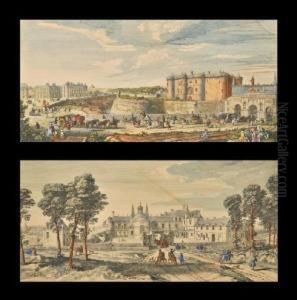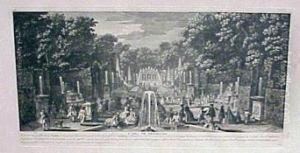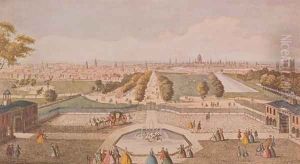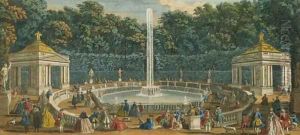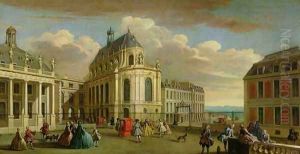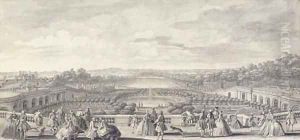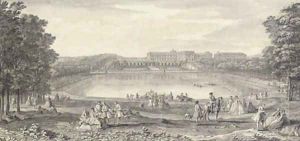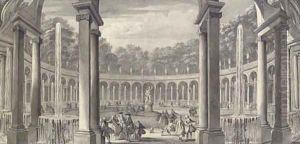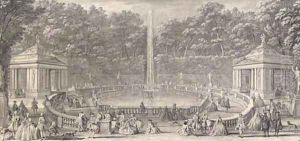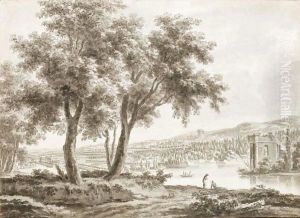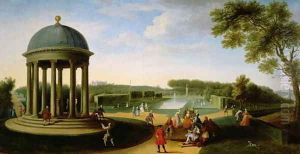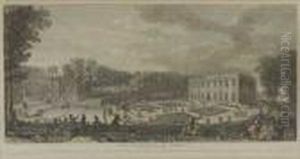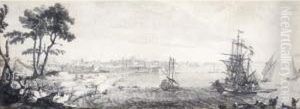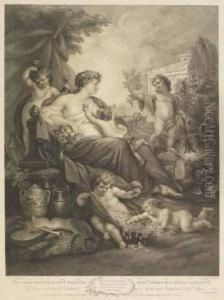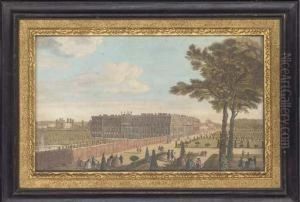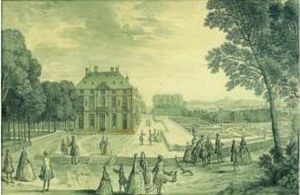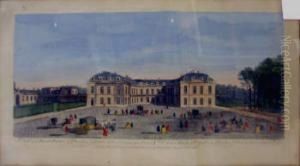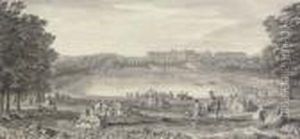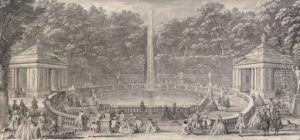Jacques Rigaud Paintings
Jacques Rigaud was an accomplished French engraver and draughtsman, born in Marseille in 1681. He is particularly known for his detailed engravings of landscapes, architecture, and gardens, which have been heralded for their precision and clarity. Rigaud's works provide a valuable historical record of urban and rural sites across Europe in the 18th century.
Rigaud's talents were recognized early on, and he received training from some of the prominent engravers of his time. He moved to Paris to further his career and quickly gained a reputation for his skill in capturing the grandeur of the French capital and the châteaux of the French countryside. His engravings were not only works of art but also served as important documents for studying the architecture and landscapes of the period.
Throughout his career, Jacques Rigaud created a substantial body of work, including a series of prints depicting the Château de Versailles and its gardens, which were commissioned by Louis XIV. These works are particularly notable for their attention to detail and the way they convey the opulence of the French court.
Rigaud's engravings were also sought after by architects and patrons as a means of showcasing their projects and estates. His ability to accurately render architectural details made his prints a valuable reference for those interested in the design and construction of buildings during his era.
Despite his focus on architecture and landscape, Rigaud's work was not limited to these subjects. He also produced portraits and historical scenes, though these are less well-known compared to his architectural engravings.
Rigaud passed away in 1754, leaving behind a legacy that has been influential in the study of 18th-century European art and architecture. His works continue to be studied and admired for their technical excellence and their role in documenting the built environment of his time.
